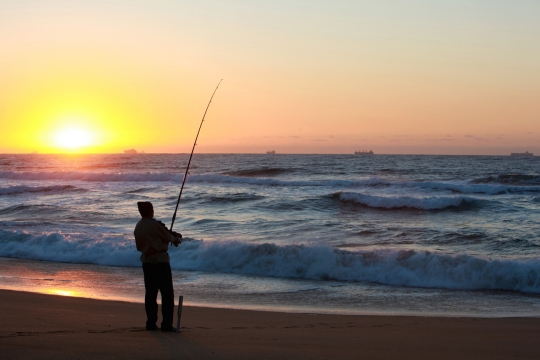Anglers along the South African coastline choose their fishing spots on the likelihood of catching the most fish, rather than how far they have to walk to get to the spot, or weather conditions. Knowing where these fishing ‘hotspots’ are could help authorities enforce catch limits, as line fish stocks have depleting dramatically in recent years.
Traditionally, management of SA’s line-fishing stocks amongst recreational anglers is done using a policy which limits the size and number of fish caught. But compliance with this legislation is nevertheless extremely low. This is because enforcement officers aren’t able to inspect anglers’ catches, owing to lack of resources to monitor the country’s 3 100km coastline. They often also lack the political will to enforce permit compliance. A previous study in the Western and Eastern Cape provinces found that only 2% of anglers had had their catch inspected.
However, a pilot study done by the Environmental Policy Research Unit (EPRU) from the University of Cape Town, suggests that if authorities can find where the fishing hotspots are along the coast, they can target these spots, and optimise their efforts to enforce the bag-and-size regulations on anglers.
EPRU director Dr Jane Turpie says that the 2011 study involved interviewing anglers randomly at six sites along a 456km stretch of coastline between Cape Town and East London.
‘We were interested in knowing what drew these anglers to the sites they had chosen,’ she explains.
‘We interviewed the anglers, gathering information on their catch, including the number, size and species of fish. We also asked about the level of satisfaction each got from the experience,’ she says.
Researchers also recorded information about the environment, such as weather conditions and wind speed, and noted the nature of the shoreline. The researchers also logged each angler’s coordinates.
In the end, they had the records of 8797 anglers that they could use to tease out angler habits and preferences.
Given what similar surveys have found in other countries, the researchers expected that anglers’ habits would be influenced by time, such as the seasons, or holidays, weather conditions, where towns were relative to the beach, and where the fishing sites were relative to vehicle access points.
‘This study showed clearly that local anglers aim first and foremost for the sites where they are likely to get the highest catches,’ Turpie explains. ‘It also showed that recreational anglers head out to fish more often over weekends and during school holidays.’
Urgent need to protect line fish
The take-home message for authorities is that if they can identify where the shoreline fishing hotspots are along the entire coastline, they can deploy their enforcement officers to these sites and get the best use of their resources.
‘We also recommend that authorities step up their inspections over weekends and during holiday seasons,’ says Turpie.
Managing recreational angling needs to be as urgent a priority as commercial fishing, because of its potential to over-extract stocks. Slow-growing in-shore fish species are not recovering along the SA coastline, in spite of regulations limiting what can be fished, and where. Species such as the galjoen, white steenbras, bronze bream and white mussel cracker, are caught almost exclusively by shoreline anglers.
For further information on the research brief, published in December by EfD, contact EPRU.
